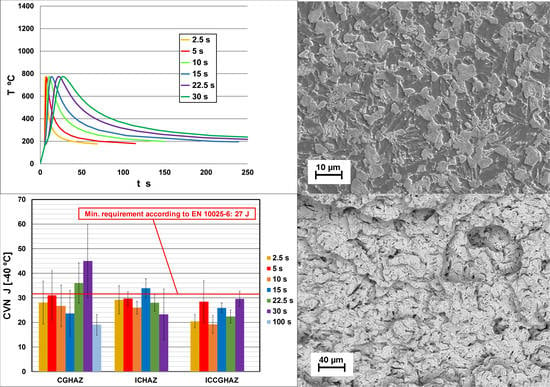Effect of Welding Heat Input on Simulated HAZ Areas in S960QL High Strength Steel
Abstract
:1. Introduction
2. Materials and Methods
2.1. The Investigated Base Material
2.2. Physical Simulation of Critical HAZ Areas
3. Results and Discussion
3.1. SEM Tests
3.2. Hardness Tests
3.3. Instrumented Charpy V-Notch Pendulum Impact Tests
4. Conclusions
Funding
Acknowledgments
Conflicts of Interest
References
- Branco, R.; Berto, F. Mechanical Behavior of High-Strength, Low-Alloy Steels. Metals 2018, 8, 610. [Google Scholar] [CrossRef]
- Węglowski, M.S. High Strength Quenched and Tempered Steels: Weldability and Welding. In High-Strength Steels: New Trends in Production and Applications; Branco, R., Ed.; Nova Science Publishers: New York, NY, USA, 2018; pp. 143–224. [Google Scholar]
- Bayock, F.N.; Kah, P.; Layus, P.; Karhin, V. Numerical and experimental investigation of the heat input effect on the mechanical properties and microstructure of dissimilar weld joints of 690-MPa QT and TMCP steel. Metals 2019, 9, 355. [Google Scholar] [CrossRef]
- Spena, P.R.; Rossi, S.; Wurzer, R. Effects of Welding parameters on strength and corrosion behavior of dissimilar galvanized Q&P and TRIP spot welds. Metals 2017, 7, 1–14. [Google Scholar]
- Kurc-Lisiecka, A.; Piwnik, J.; Lisiecki, A. Laser welding of new grade of advanced high strength steel STRENX 1100 MC. Arch. Metal. Mater. 2017, 62, 1651–1657. [Google Scholar] [CrossRef]
- Varbai, B.; Sommer, C.; Szabó, M.; Tóth, T.; Májlinger, K. Shear tension strength of resistant spot welded ultra high strength steels. Thin-Walled Struct. 2019, 142, 64–73. [Google Scholar] [CrossRef]
- Bhadesia, H.K.D.H.; Honeycombe, R.W.K. Steels: Microstructure and Properties, 3rd ed.; Elsevier: Oxford, UK, 2006; pp. 95–258. [Google Scholar]
- Tervo, H.; Kaijalainen, A.; Pikkarainen, T.; Mehtonen, S.; Porter, D. Effect of impurity level and inclusions on the ductility and toughness of an ultra-high-strength steel. Mater. Sci. Eng. A 2017, 697, 184–193. [Google Scholar] [CrossRef]
- Porter, D.A.; Easterling, K.E. Phase Transformations in Metals and Alloys, 2nd ed.; Chapman and Hall: London, UK, 1996; pp. 387–441. [Google Scholar]
- Dunne, D.P.; Pang, W. Displaced hardness peak phenomenon in heat-affected zone of welded quenched and tempered EM812 steel. Weld. World 2017, 61, 57–67. [Google Scholar] [CrossRef]
- Hochauser, F.; Ernst, W.; Rauch, R.; Vallant, R.; Enzinger, N. Influence of the soft zone on the strength of welded modern HSLA steels. Weld. World 2012, 56, 77–85. [Google Scholar] [CrossRef]
- Lukács, J.; Dobosy, Á. Matching effect on fatigue crack growth behaviour of high-strength steels GMA welded joints. Weld. World. 2019, 63, 1315–1327. [Google Scholar] [CrossRef]
- Hassanifard, S.; Mohtadi-Bonab, M.A.; Jabbari, Gh. Investigation of fatigue crack propagation in spot-welded joints based on fracture mechanics approach. J. Mater. Eng. Perform. 2013, 22, 245–250. [Google Scholar] [CrossRef]
- Leroy Olscon, D.; Siewert, T.A.; Liu, S.; Edwards, G.R. ASM Handbook: Welding Brazing and Soldering; ASM International: Novelty, OH, USA, 1995; pp. 191–212. [Google Scholar]
- Nevasmaa, P. Evaluation of HAZ Toughness Properties in Modern Low Carbon Low Impurity 420, 550 and 700 MPa Yield Strength Thermomechanically Processed Steels with Emphasis on Local Brittle Zones; Lisensiaatintyö, University of Oulu: Oulu, Finland, 1996. [Google Scholar]
- Adony, Y. Heat-affected zone characterization by physical simulations. Weld. J. 2006, 85, 42–47. [Google Scholar]
- Rykalin, N.N.; Nikolaev, A.V. Welding arc heat flow. Weld. World 1971, 9, 112–133. [Google Scholar]
- Gáspár, M.; Balogh, A. GMAW experiments for advanced (Q + T) high strength steels. Prod. Proc. Syst. 2013, 6, 9–24. [Google Scholar]
- Kuzsella, L.; Lukács, J.; Szűcs, K. Nil-strength temperature and hot tensile tests on S960QL high-strength low-alloy steel. Prod. Proc. Syst. 2013, 6, 67–78. [Google Scholar]
- Laitinen, R.; Porter, D.A.; Karjalainen, L.P.; Leiviskä, P.; Kömi, J. Physical simulation for evaluating heat-affected zone toughness of high and ultra-high strength steels. Mater. Sci. For. 2013, 762, 711–716. [Google Scholar] [CrossRef]
- Gáspár, M.; Balogh, A.; Lukács, J. Toughness examination of physically simulated S960QL HAZ by a special drilled specimen. In Vehicle and Automotive Engineering; Springer: Berlin, Germany, 2017; pp. 469–481. [Google Scholar]
- Mohtadi-Bonab, M.A.; Ghesmati-Kucheki, H. Important factors on the failure of pipeline steels with focus on hydrogen induced cracks and improvement of their resistance: Review paper. Met. Mater. Int. 2019, 25, 1109–1134. [Google Scholar] [CrossRef]
- Lenkeyné, B.Gy.; Winkler, S.; Tóth, L.; Blauel, J.G. Investigations on the brittle to ductile fracture behaviour of base metal, weld metal and HAZ material by instrumented impact testing. In Proceedings of the 1st International Conference on Welding Technology, Materials and Material Testing, Fracture Mechanics and Quality Management, Wien, Austria, 22–24 September 1997; pp. 423–432. [Google Scholar]
- Konat, L. Structural aspects of execution and thermal treatment of welded joints of hardox extreme steel. Metals 2019, 9, 915. [Google Scholar] [CrossRef] [Green Version]

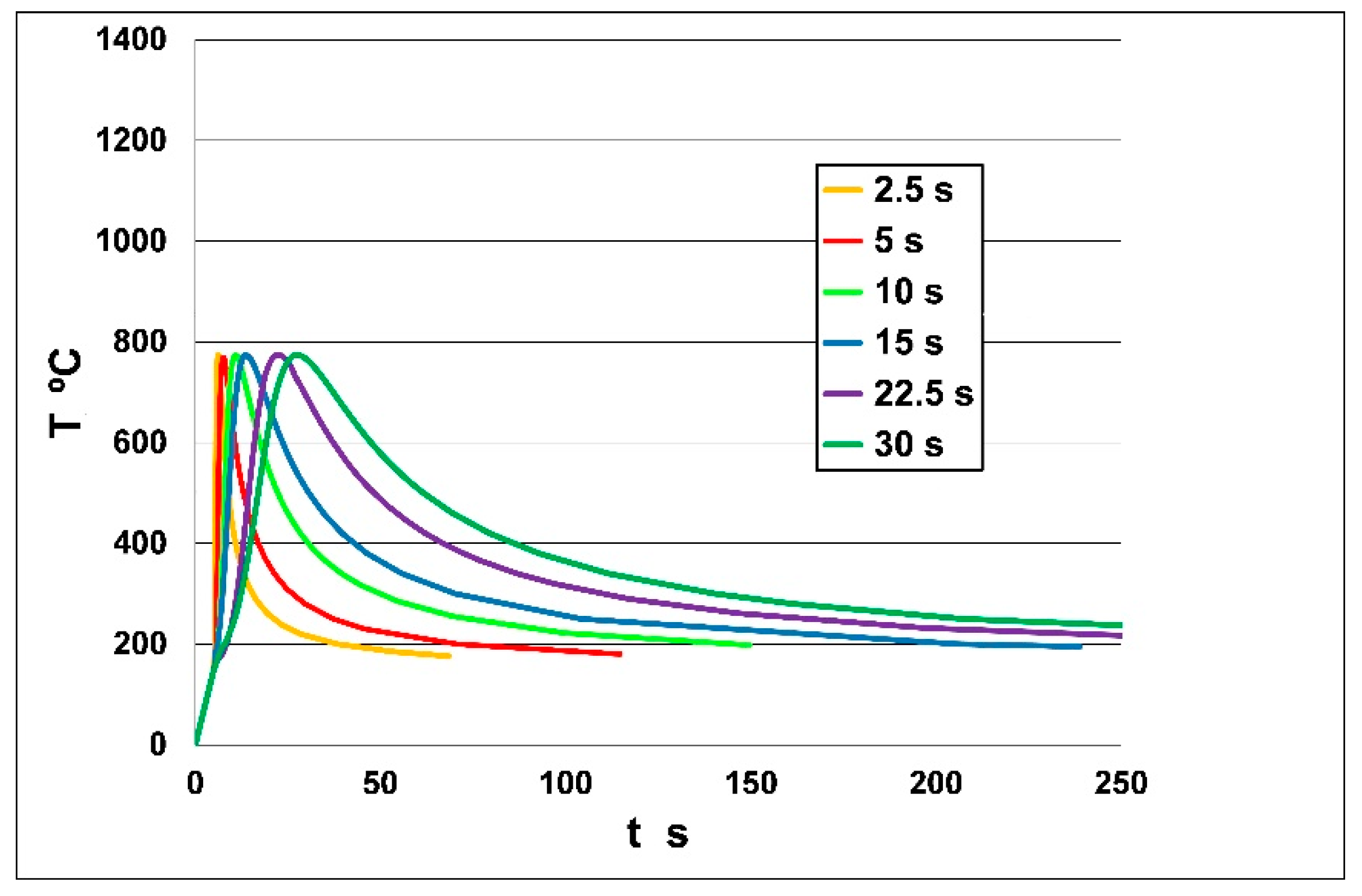
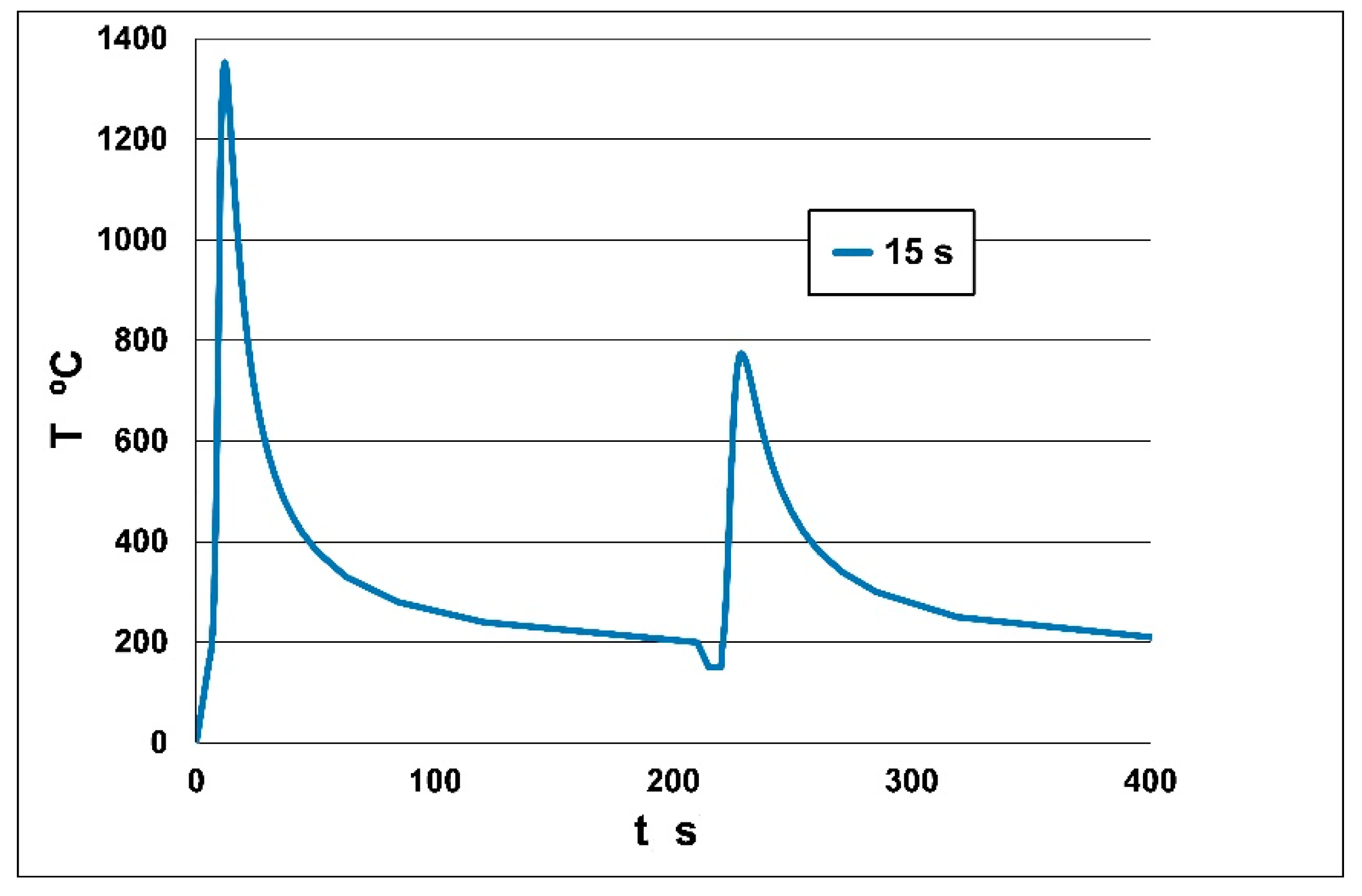
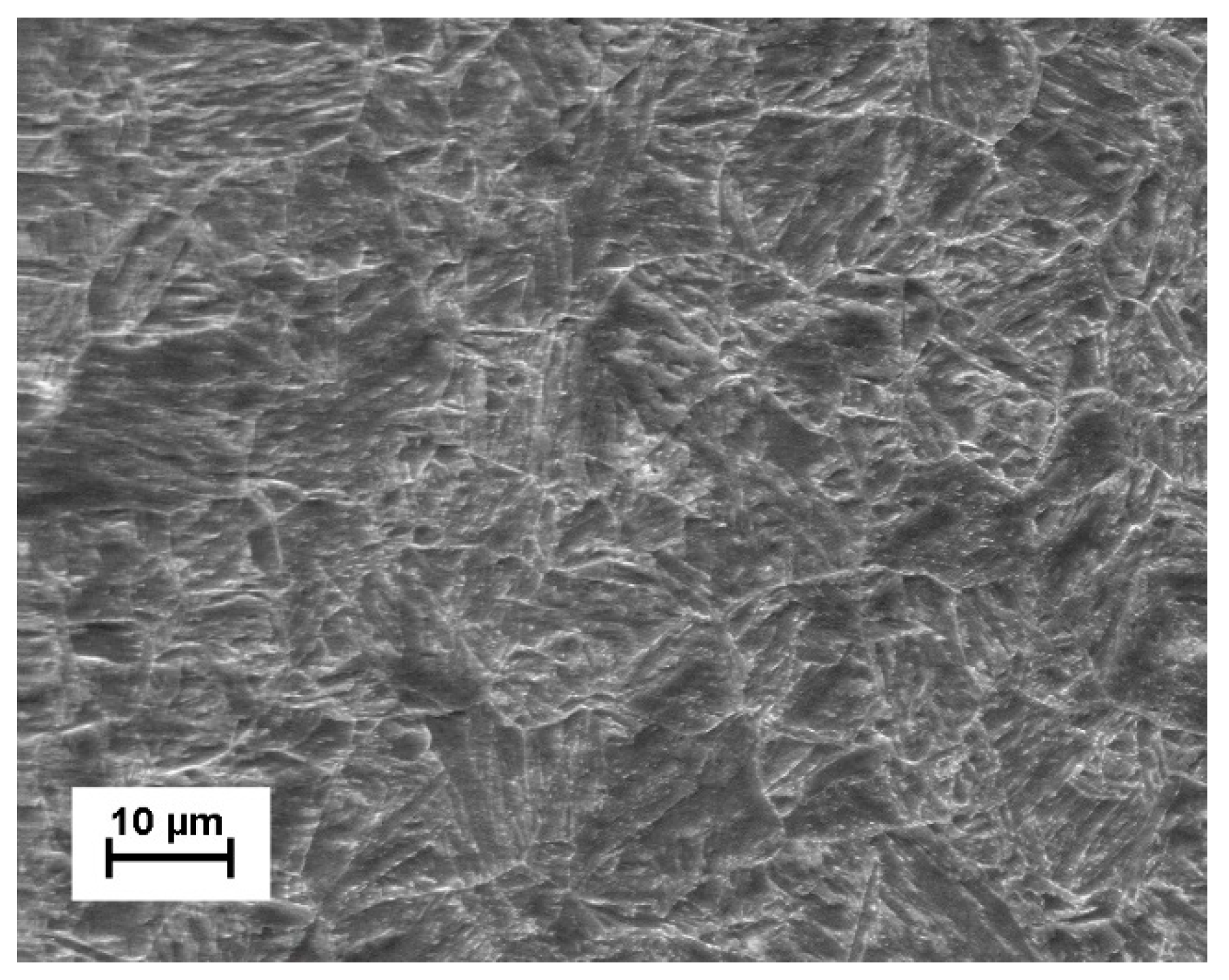
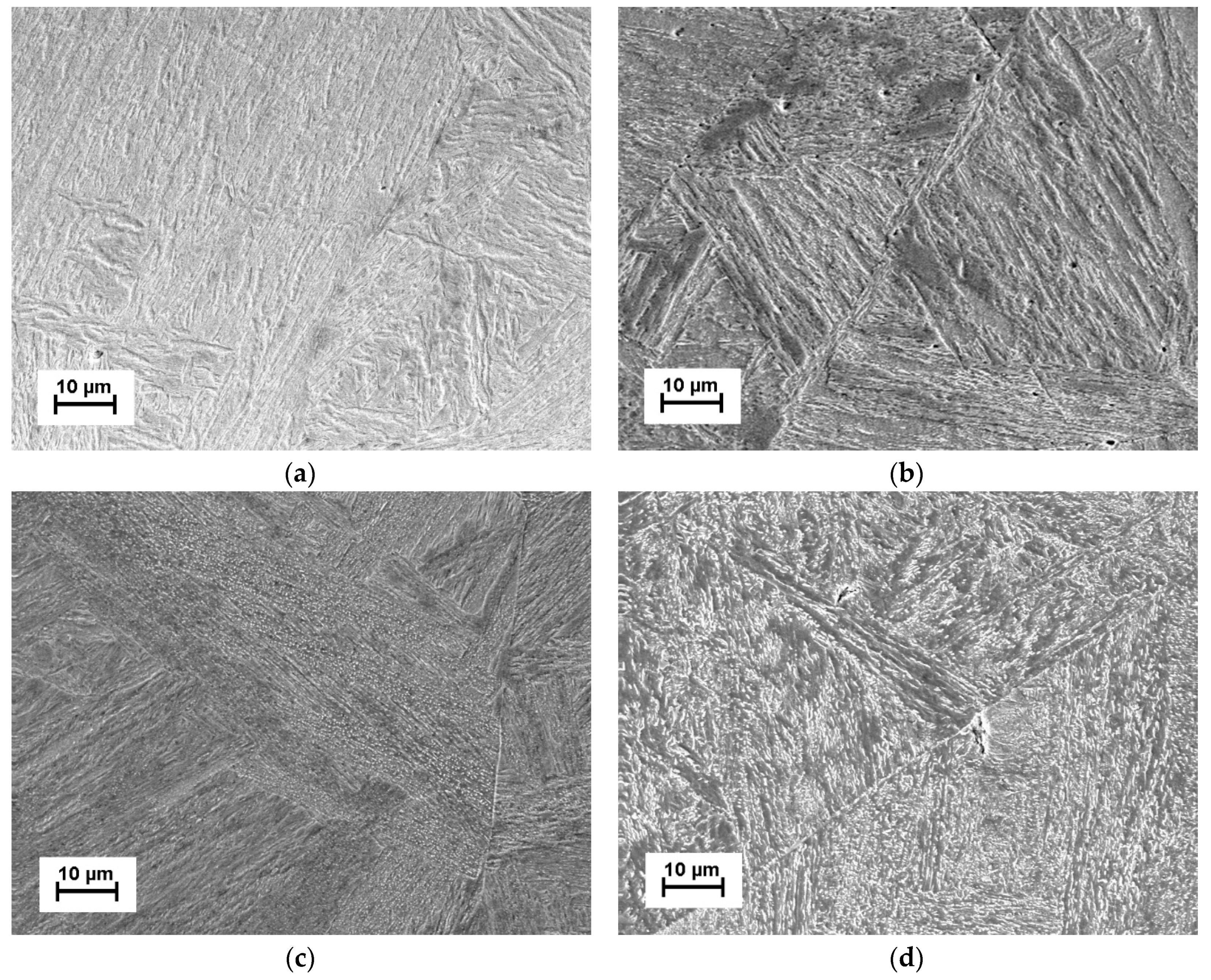



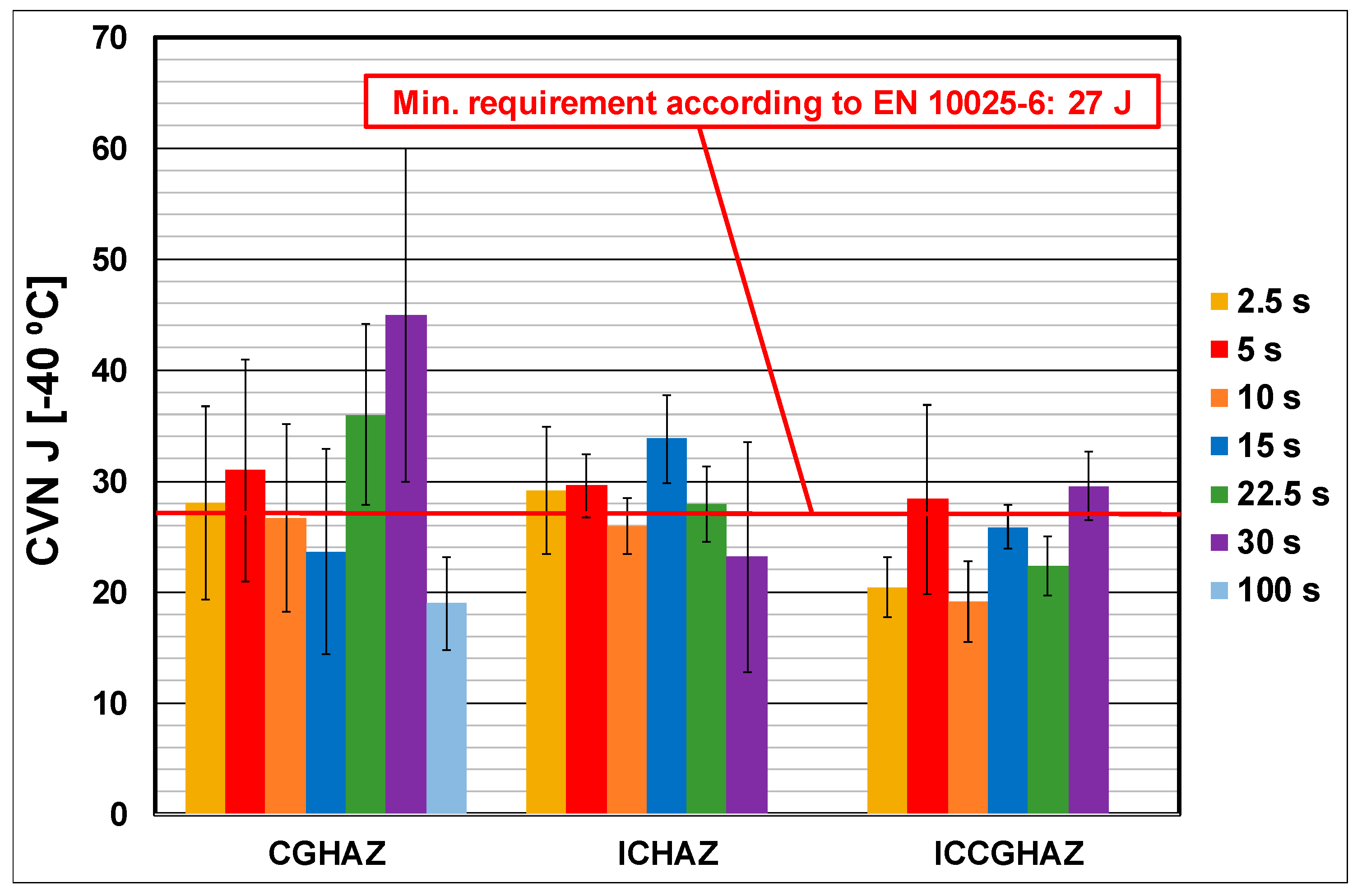
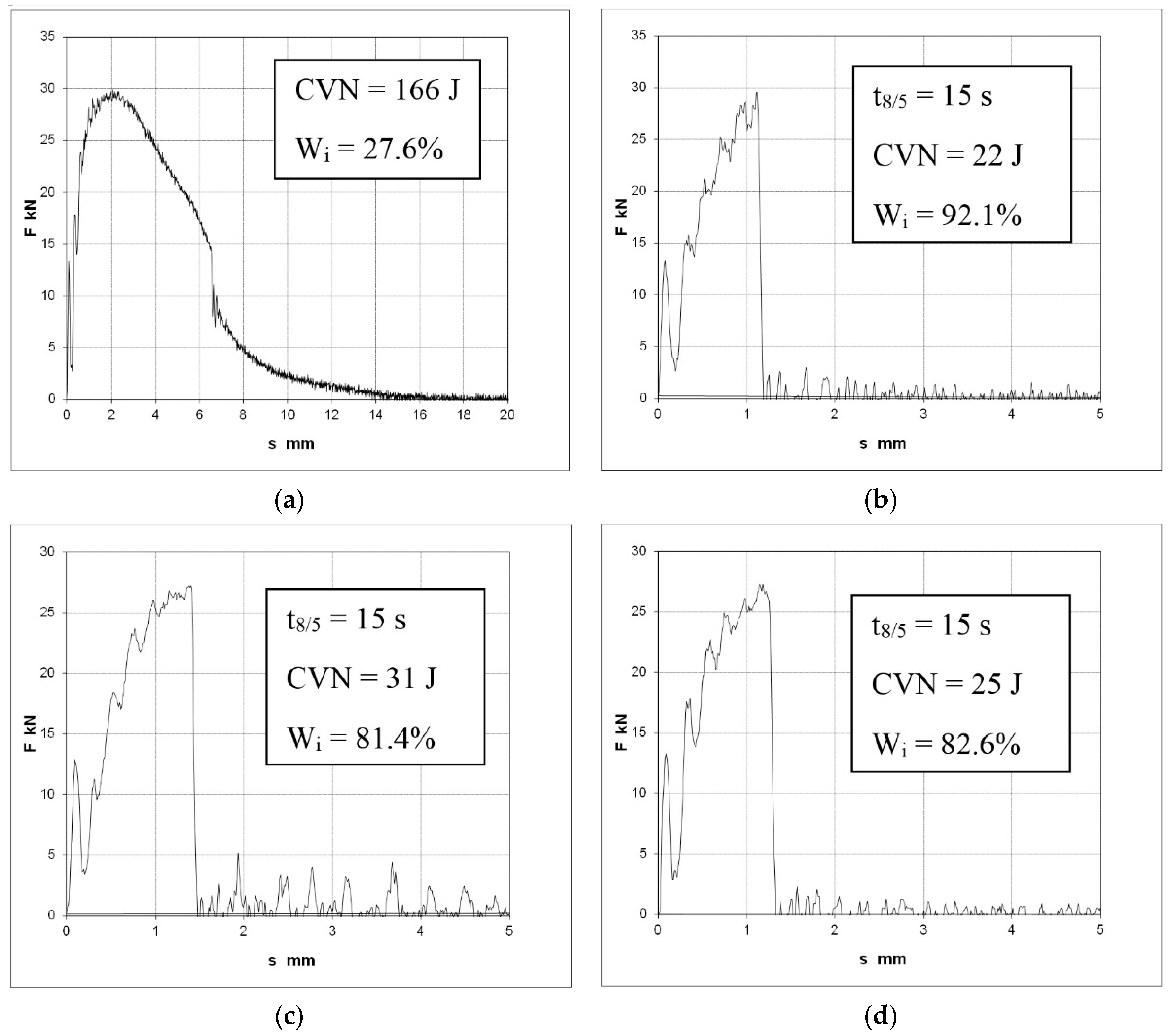
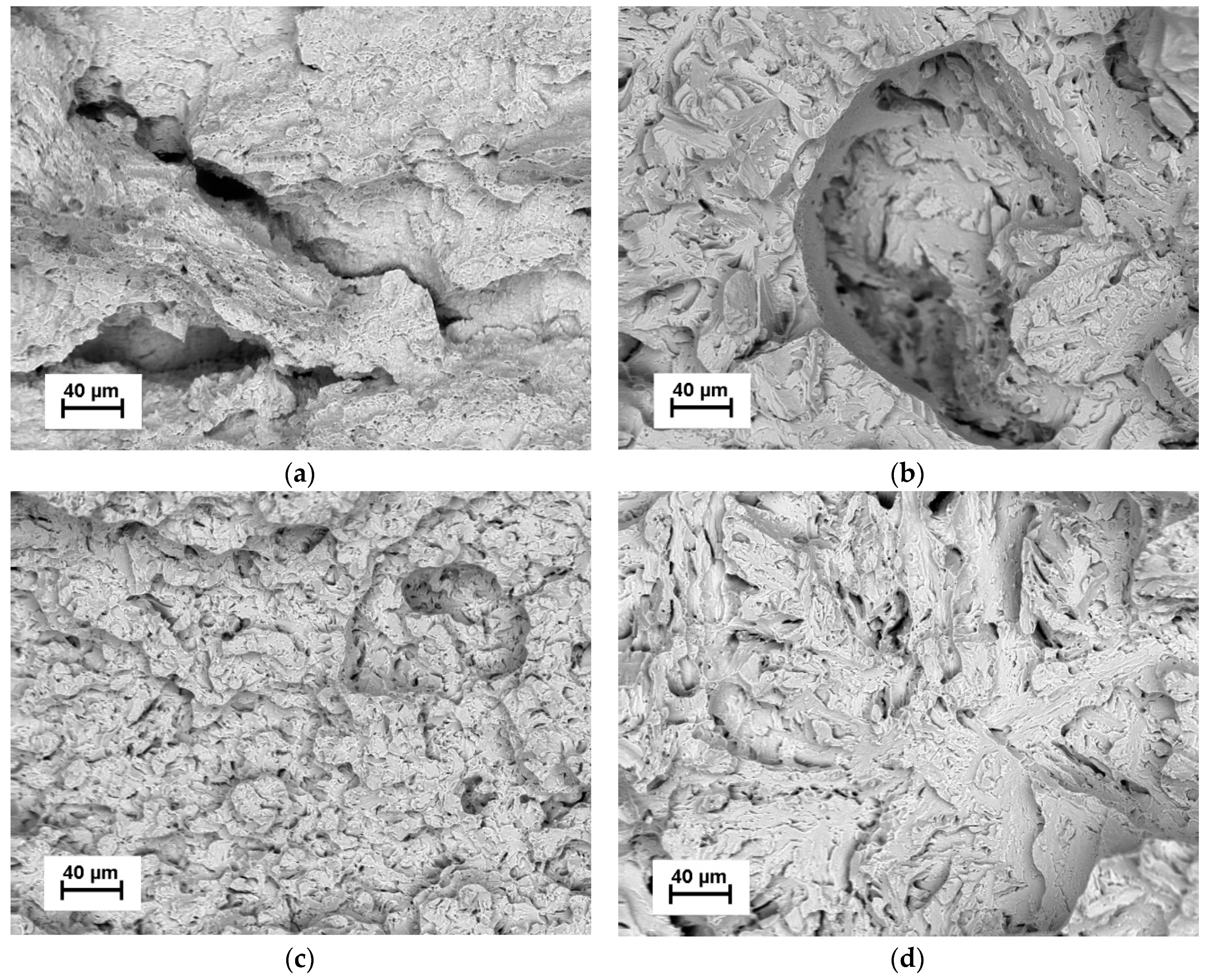
| Chemical Composition (wt. %) | |||||||||||||
|---|---|---|---|---|---|---|---|---|---|---|---|---|---|
| C | Si | Mn | P | S | Cr | Ni | Mo | V | Ti | Al | Nb | B | N |
| 0.17 | 0.23 | 1.23 | 0.011 | 0.001 | 0.20 | 0.04 | 0.588 | 0.041 | 0.004 | 0.061 | 0.017 | 0.001 | 0.002 |
| Mechanical Characteristics | |||||
|---|---|---|---|---|---|
| S960QL | Rp0.2 MPa | Rm MPa | Rp0.2/Rm | A5 % | CVN (at −40 °C) J |
| EN 10025-6 | ≥960 | 980–1150 | - | ≥10 | ≥27 |
| Material certificate | 1014 | 1053 | 0.96 | 14 | 75 |
| Measured Maximal Hardness Values in Real HAZ of GMA Welded Joints | ||||
|---|---|---|---|---|
| t8/5 s | 6–10 | 10–15 | 15–20 | 20–30 |
| HV10 | 405 | 390 | 385 | 345 |
| Measured CVN Values of GMA Welded Joints from S960QL Steel | ||||
|---|---|---|---|---|
| t8/5 s | 6–10 | 10–15 | 15–20 | 20–30 |
| VWT * 1 | 43, 46, 49 | 38, 45, 47 | 40, 41, 42 | 37, 38, 39 |
| VHT * 1/1 | 19, 33, 42 | 36, 42, 54 | 28, 33, 53 | 22, 27, 30 |
| t8/5 s | 2.5 | 5 | 10 | 15 | 22.5 | 30 | Average |
|---|---|---|---|---|---|---|---|
| BM | - | 25.9 | |||||
| CGHAZ | 91.9 | 90.1 | 87.0 | 89.9 | 89.2 | 87.3 | 89.2 |
| ICHAZ | 90.7 | 84.2 | 80.7 | 77.4 | 81.5 | 79.2 | 82.3 |
| ICCGHAZ | 93.1 | 85.6 | 88.0 | 87.7 | 88.5 | 84.2 | 87.8 |
© 2019 by the author. Licensee MDPI, Basel, Switzerland. This article is an open access article distributed under the terms and conditions of the Creative Commons Attribution (CC BY) license (http://creativecommons.org/licenses/by/4.0/).
Share and Cite
Gáspár, M. Effect of Welding Heat Input on Simulated HAZ Areas in S960QL High Strength Steel. Metals 2019, 9, 1226. https://doi.org/10.3390/met9111226
Gáspár M. Effect of Welding Heat Input on Simulated HAZ Areas in S960QL High Strength Steel. Metals. 2019; 9(11):1226. https://doi.org/10.3390/met9111226
Chicago/Turabian StyleGáspár, Marcell. 2019. "Effect of Welding Heat Input on Simulated HAZ Areas in S960QL High Strength Steel" Metals 9, no. 11: 1226. https://doi.org/10.3390/met9111226
APA StyleGáspár, M. (2019). Effect of Welding Heat Input on Simulated HAZ Areas in S960QL High Strength Steel. Metals, 9(11), 1226. https://doi.org/10.3390/met9111226




